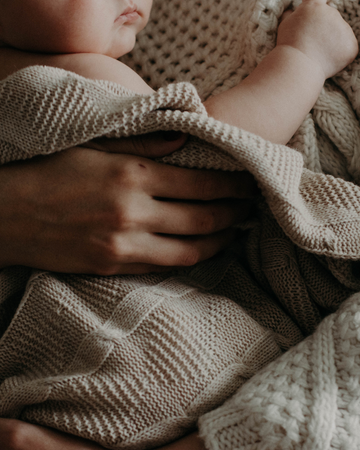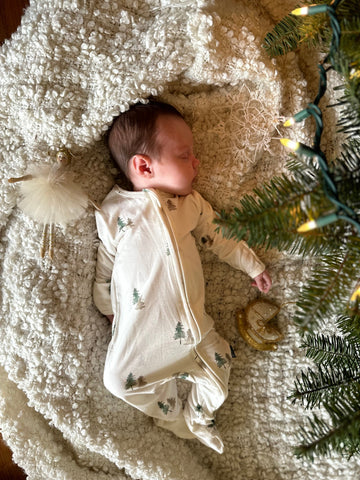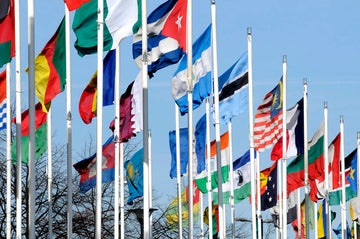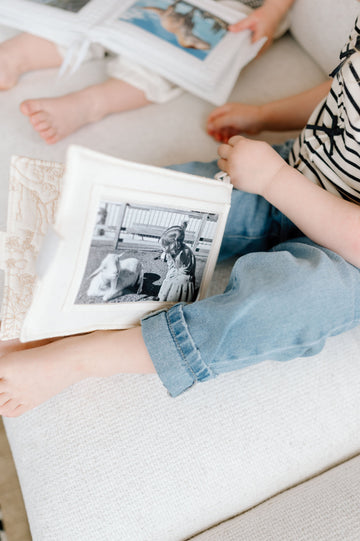Bamboo baby clothing is often praised as a soft, breathable, and “eco-friendly” choice. But behind the marketing lies a little-known truth: nearly all bamboo clothing on the market is not truly bamboo — it’s rayon made through a chemical-intensive process involving carbon disulfide, a toxic and hazardous substance.
Emerging scientific research, including from Harvard University, is now drawing attention to the serious health and environmental consequences of carbon disulfide. And yet, regulatory bodies in North America do not currently require testing for its presence in finished clothing — even for babies and young children.
This article breaks down the science behind bamboo rayon, the risks associated with carbon disulfide, and what parents can do to make safer, smarter choices for their families.
What Is Carbon Disulfide?
Carbon disulfide (CS₂) is a colorless, flammable liquid with a sweet, ether-like odor. It is widely used in the manufacturing of viscose rayon — the fiber derived from bamboo, wood, or other cellulose sources that is commonly used in clothing, especially items marketed as “bamboo fabric.”
To create bamboo rayon, cellulose from bamboo is dissolved in a bath of sodium hydroxide and carbon disulfide to form a viscous solution, which is then forced through spinnerets to create fibers.
“Carbon disulfide is used extensively in the viscose rayon industry. Its toxicity to the nervous system, cardiovascular system, and reproductive system is well established.”
— Harvard T.H. Chan School of Public Health, 2020
Health Risks of Carbon Disulfide Exposure
Studies going back decades — including landmark research published by Harvard’s School of Public Health — have found that carbon disulfide exposure can result in serious health effects, even at low levels.
According to Harvard researchers and numerous peer-reviewed studies, chronic or occupational exposure to carbon disulfide has been linked to:
- Neuropsychiatric symptoms such as irritability, mood swings, and cognitive impairment
- Increased risk of heart disease, stroke, and hypertension
- Endocrine disruption and reproductive harm, including infertility and birth defects
- Liver, kidney, and thyroid dysfunction
- Sensory and motor nerve damage
References:
- Harvard T.H. Chan School of Public Health: “Carbon Disulfide Toxicity in Viscose Rayon Workers” (2020)
- WHO Environmental Health Criteria 10: “Carbon Disulfide” (1979)
- NIOSH Criteria for a Recommended Standard: Carbon Disulfide (1977)
Is Bamboo Baby Clothing Safe?
Here’s the troubling part: although carbon disulfide is primarily dangerous to workers during manufacturing, trace amounts can remain in the finished fabric, especially when the production process is not highly regulated.
Even micro-exposures to toxins like carbon disulfide can be harmful to babies and toddlers, whose bodies are smaller and more vulnerable. Research has shown that early exposure to endocrine-disrupting chemicals can affect:
- Sleep quality
- Emotional regulation
- Cognitive development
- Hormonal balance
Yet, the U.S. Consumer Product Safety Commission (CPSC) and Health Canada do not currently require testing for carbon disulfide residue in textiles — even in baby clothing.
“A product labeled as bamboo may actually be rayon or viscose, produced with toxic chemicals that can remain in the final garment. Parents deserve transparency, especially when it comes to products for their children.”
— Environmental Working Group (EWG), 2021
How Is TENCEL™ Different?
Unlike bamboo rayon, TENCEL™ is made through a closed-loop production process that recycles over 99% of the solvents used, without releasing harmful chemicals into the environment — or the finished fabric.
TENCEL™ is produced by the Austrian company Lenzing and is widely recognized for its safety, sustainability, and performance.
TENCEL™ vs. Bamboo Rayon:
| Property | TENCEL™ | Bamboo Rayon (Viscose) |
|---|---|---|
| Chemical Residues | None (closed-loop system) | Often contains carbon disulfide |
| Breathability | Higher than cotton | Similar to cotton |
| Feel | Silky, cool, luxurious | Soft, but prone to pilling |
| Environmental Impact | Low (sustainable forestry, safe solvents) | High (toxic chemicals, pollution) |
| Safety for Babies | Certified non-toxic | Not tested for CS₂ residue |
Why We Chose TENCEL™ for Our Sleepwear
At The Cotton Lane, we believe parents deserve better than vague claims and greenwashed marketing. That’s why we’ve chosen Austrian TENCEL™ for our baby sleepers — a fabric that is:
- More breathable than cotton
- Cooler to the touch
- Softer and silkier than bamboo rayon
- Free from carbon disulfide and toxic residues
We’re committed to using materials that are safe, sustainable, and truly gentle — for your baby, your home, and the planet.
Final Thoughts
“Bamboo” baby clothing may sound natural, but the truth is far more complicated. If a fabric is labeled as “bamboo,” it’s almost always rayon — and that rayon was almost certainly made using carbon disulfide, a chemical with well-documented health risks.
Thankfully, better options exist. Thanks to scientific innovation and responsible production methods, fabrics like TENCEL™ offer all the benefits of bamboo — without the hidden harm.
Choose softness without sacrifice. Choose safety without compromise. Choose better than bamboo.
References:
- Harvard T.H. Chan School of Public Health – Carbon Disulfide and Viscose Rayon Exposure
- Environmental Working Group – Hidden Hazards in “Bamboo” Clothing
- World Health Organization – Environmental Health Criteria 10: Carbon Disulfide
- NIOSH – Criteria for a Recommended Standard: Carbon Disulfide
- Lenzing Group – TENCEL™ Sustainability Overview





